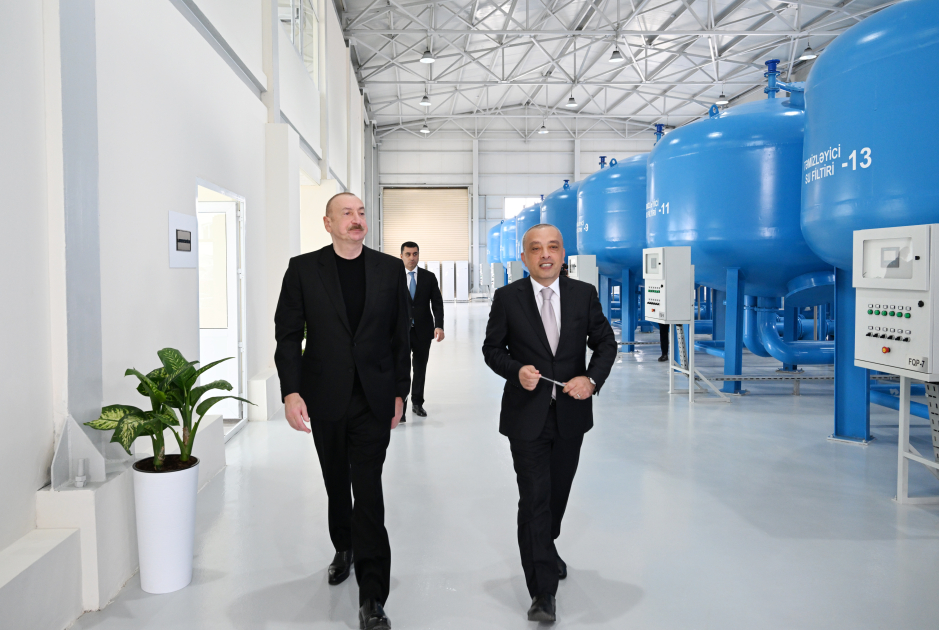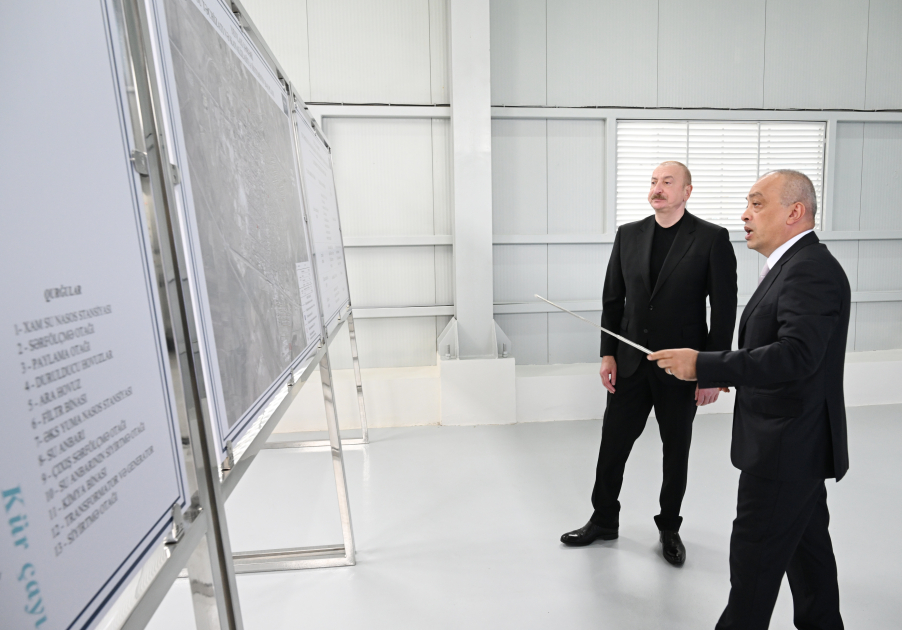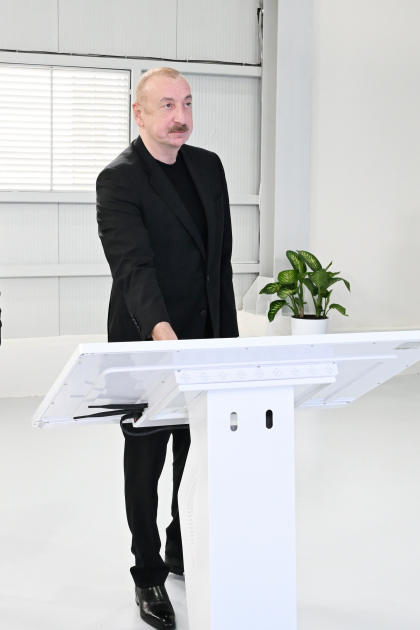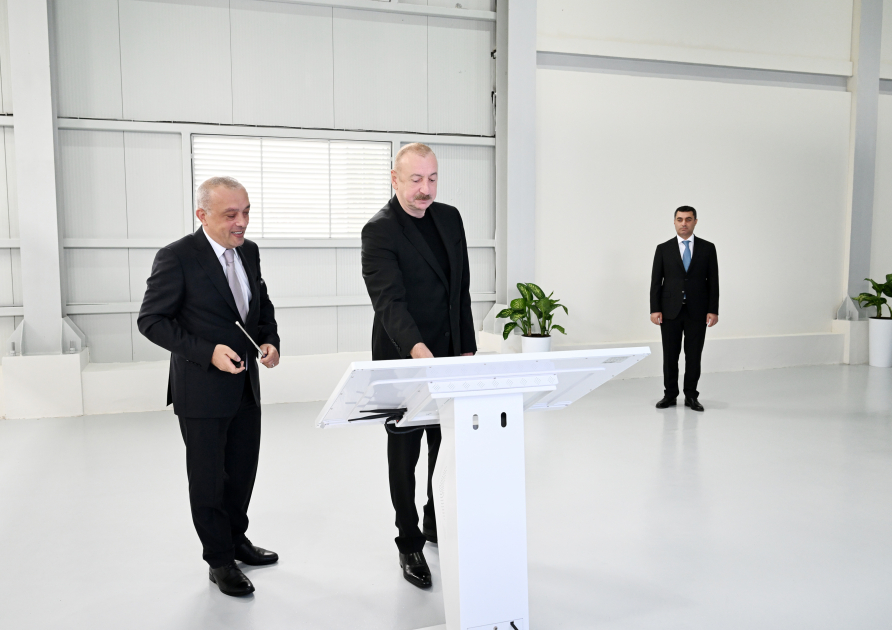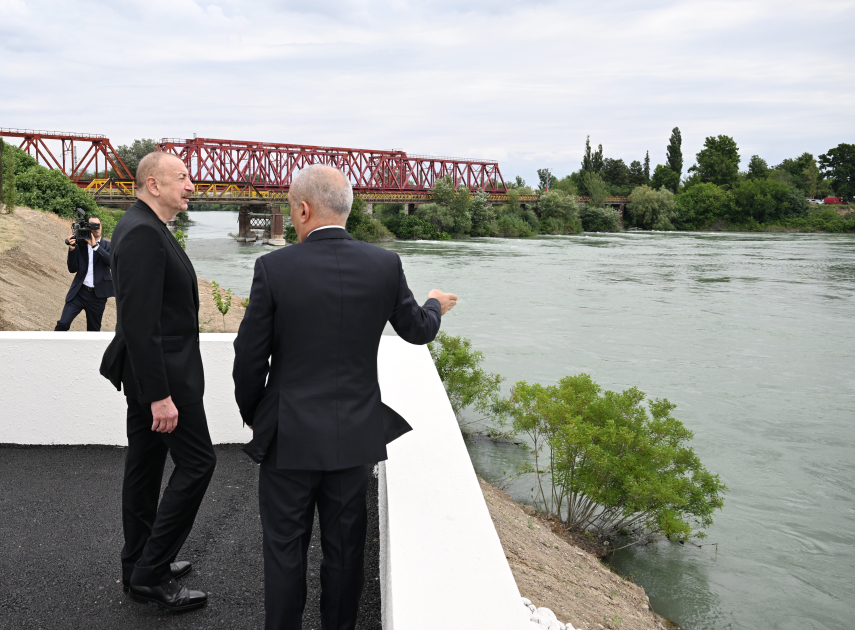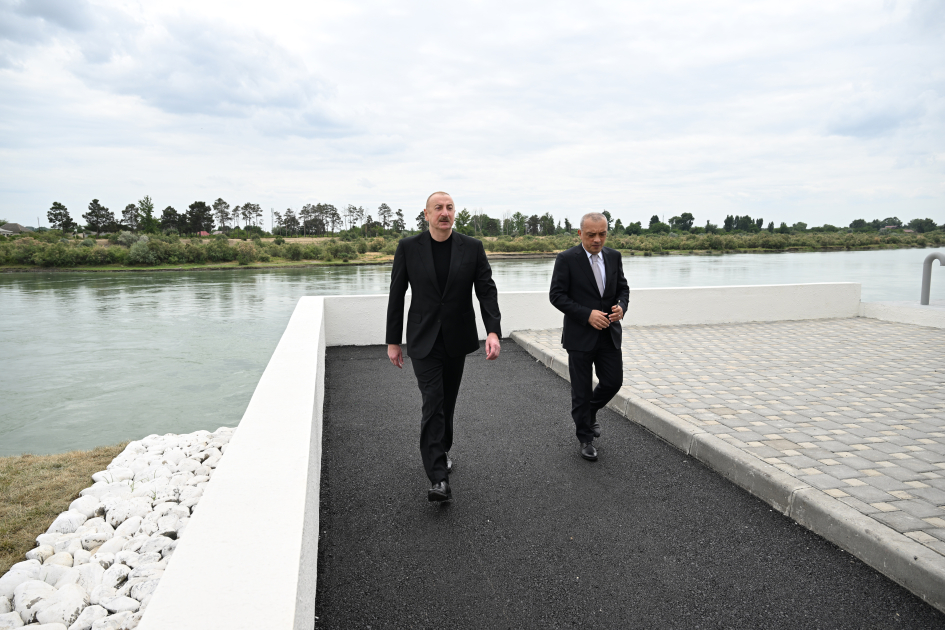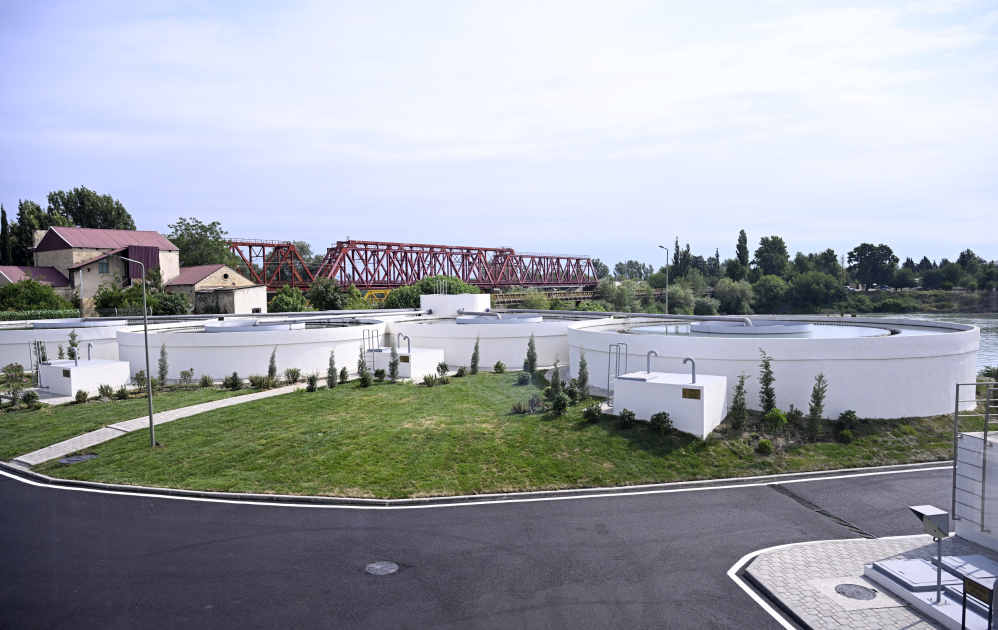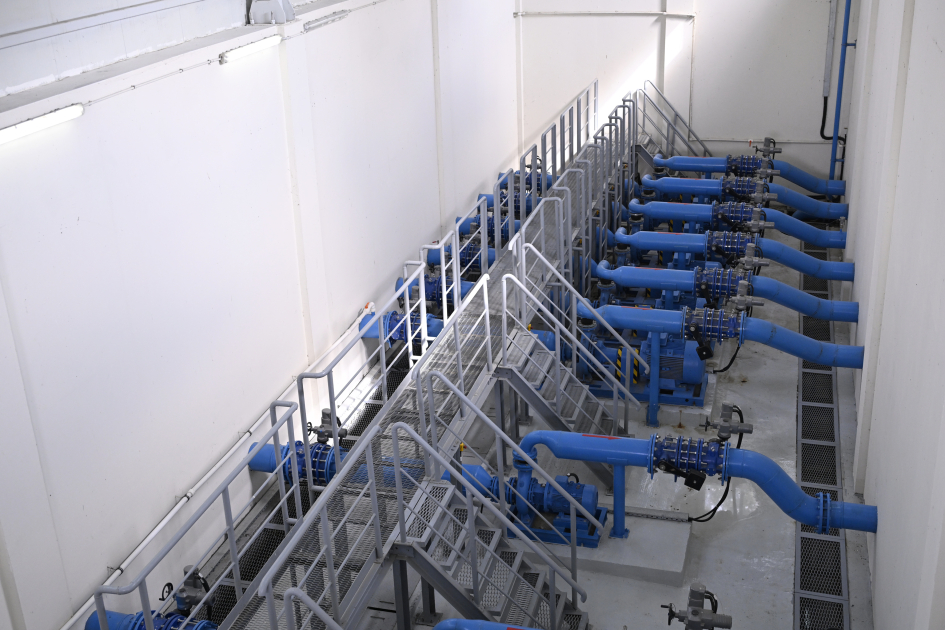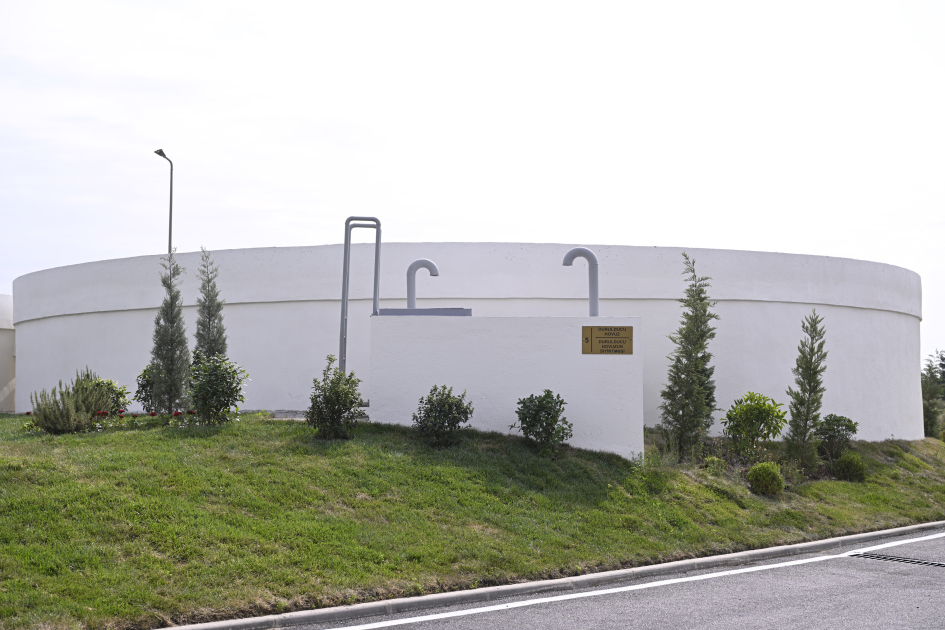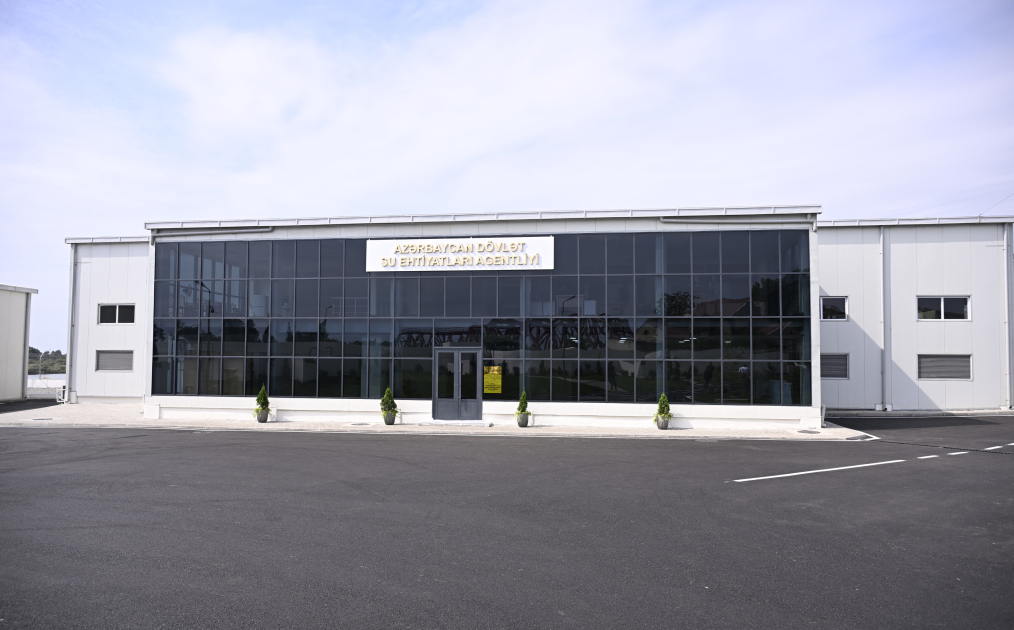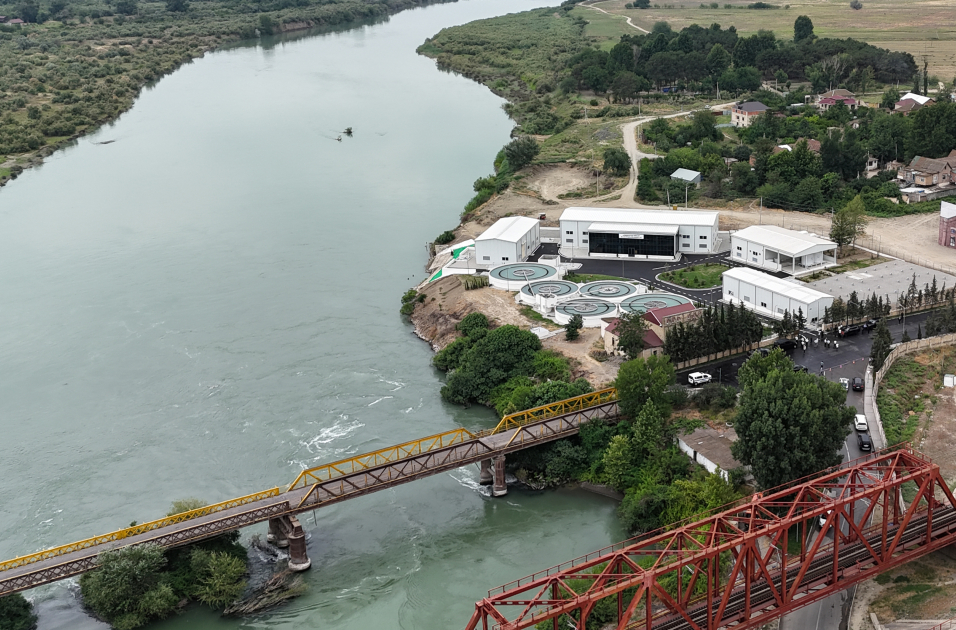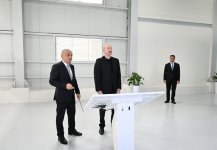BAKU, Azerbaijan, June 23. On June 23, President of the Republic of Azerbaijan Ilham Aliyev attended the inauguration of a sand filter-free water treatment facility in the city of Yevlakh, Trend reports.
Chairman of the State Water Resources Agency Zaur Mikayilov informed President Ilham Aliyev about the project for the reconstruction of Yevlakh’s water supply and sewage systems.
The project is designed to improve drinking water supply and wastewater services for 70,000 residents, taking into account the city's prospective development until 2035. Under the project, the construction is planned of a drinking water treatment plant with a capacity of 20,000 cubic meters per day, 139 kilometers of drinking water network, nearly 13,000 household connections, 115 kilometers of wastewater network, and 5 pumping stations. Additionally, a treatment facility with a daily capacity of 12,500 cubic meters will be built to purify and discharge the city’s wastewater.
As part of the project, a sand-free rapid filtration treatment facility with a daily capacity of 20,000 cubic meters has already been constructed on the bank of the Kura River to ensure a reliable drinking water supply to the city. The plant has 16 filters installed and includes two water reservoirs with a total capacity of 2,500 cubic meters for storing treated water. The facility is equipped with special pumps for disinfection and backwashing processes, as well as a transformer and generator to ensure energy supply. Furthermore, an 86-kilometer-long water distribution network has been constructed, and 4,230 household connections with water meters have been installed.
Yevlakh’s water supply and sewage systems were originally established in the 1950s and 1960s. The city’s main water sources were sub-artesian wells and the Kura River. The 15 sub-artesian wells currently in operation could no longer meet demand. Despite repeated maintenance and capital repairs, the two 27-kilometer-long main pipelines from the well zone to the city were unable to provide sustainable water supply. Water drawn from the Kura River using pumps was only partially treated before being distributed to consumers. The existing 191-kilometer-long water distribution network in the city had deteriorated after years of use and could no longer meet demand.
Will be updated

